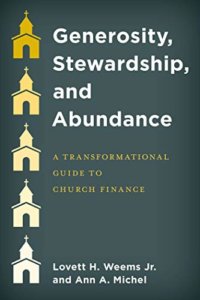Lovett Weems says that churches should be deliberate and careful in making plans to resume ministries disrupted by the pandemic. The restart of youth ministry, Christian education, mission, and other programs presents an opportunity to evaluate the effectiveness of your pre-pandemic approach, consider new options, and innovate in ways that promote fruitful outcomes.
Churches are devoting a good deal of time and energy to resuming in-person worship in safe and significant ways. These efforts, for the most part, seem to be going well. Similar attention is needed regarding the resumption of a range of other ministries disrupted by the pandemic. Christian education, youth ministry, mission outreach, and small group ministries are but a few examples.
Much of what you are learning about resuming in-person worship will serve you well. What is increasingly clear in many areas of our lives is that returning to “normal” may be the desire but not likely a realistic scenario. This is the case with worship and also a range of other ministries. This presents an opportunity to rethink not only worship but also the underlying assumptions of other pre-pandemic ministries — assumptions that may have been flawed then, or now. Don’t let the understandable focus on worship cause you to lose sight of the need to address other crucial ministries.
Step 1. Audit what you were doing and achieving before the pandemic.
Consider youth ministry as an example to illustrate these steps. You may be thinking about restarting one youth activity that met before the pandemic. It is wiser to think more broadly. Ask, “When the pandemic began, what were the specific ministries focused on the youth of our church and community?” Begin with the traditional youth group, but also name other youth-oriented ministries. Sunday School class. Choir. Mission engagement. Worship leadership. Then, name the results of each of these efforts before the pandemic. Were they bearing fruit? If so, what was the nature of those outcomes? Degree of investment? Level of participation? Entry for new youth? Spiritual growth? Other?
Step 2. Look ahead one year, and name what you would like for the results of your ministry with youth to be.
Step away from the details of what you used to do and think only of what you most hope God would be doing among your youth one year from now. What kind of fruit would you most hope your church’s youth ministry would bear? You have already identified what previous outcomes were. If you have higher goals for your youth ministry, simply resuming what was will not be adequate.
Step 3. Ask what you need to learn to achieve those results.
Resist the temptation to move immediately to “what do we do?” Sharing ideas at this point tends not to be helpful. You do not yet know enough to have the most valuable ideas. If you did, you would have already implemented them. The reality is that you need to learn a great deal before making plans.
Here are some ways to learn what you need to achieve the results you seek. Begin talking with those you most hope to reach. This includes those active before the pandemic but also those youth who were not involved but you hope to reach, within the congregation and beyond. Identify other churches with vital youth ministry in your denomination or others. Learn from them. Copying what another church does won’t work. Instead, identify clues you can shape to fit your context. Check out websites. Review publications and books. Distribute these assignments among others and come together for learning sessions where you share what you are discovering, especially recurring patterns you identify.
Step 4. Take first steps that give you an opportunity to test out your new insights and assumptions.
If what you are discovering about vital youth ministry is instructive, in what ways would that shape how you resume various aspects of your ministry with youth? It could be a one-time effort to test out one of your insights. It could be focus groups with youth. Your goal is not to develop a comprehensive plan but an initial plan that permits adjustments and changes as you continue to learn.
Step 5. Continue to improve, always focused not on what you are doing, but whether what you are doing is producing the outcomes you seek.
For well-functioning ministries that are fruitful year after year, it may make sense to implement a year-long plan that simply needs monitoring. This is not the case with any ministry that is new, a restart, or something your church has not done very well for some time. In these cases, the goal is not so much to implement plans but to learn from those efforts. What’s working? What’s not working? Do we know? How can we find out as quickly as possible?
This step-by-step approach takes more thought and time but is well worth it. The benefits that come through the prayer, discernment, study, and conversations with others will manifest results in ministries beyond the one at hand. New learnings and new connections serve as a virtuous cycle out of which much creativity and fruitfulness emerge.
 Lovett H. Weems Jr. is co-author with Ann Michel of Generosity, Stewardship, and Abundance: A Transformational Guide to Church Finance (Rowman and Littlefield, 2021).
Lovett H. Weems Jr. is co-author with Ann Michel of Generosity, Stewardship, and Abundance: A Transformational Guide to Church Finance (Rowman and Littlefield, 2021).
Related Resources
- Theology of Stewardship and Biblical Generosity Video Tool Kit
- What Will Your Church Look Like Post-COVID-19? by Barry Winders
- 4 Ways to Measure if Your Ministry Is Working by Naomi Annandale
- Fruitful Leadership for a Mission-Shaped Church by David McAllister-Wilson






